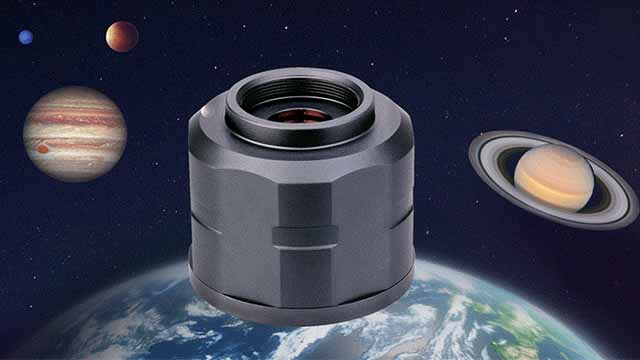What Details Should You Pay Attention to When Choosing a Planetary Camera?

What Details Should You Pay Attention to When Choosing a Planetary Camera?
We usually divide astrophotography into three categories: planetary photography, deepspace photography, and hoshino Photography. Whether you're taking pictures of stars, galaxies, nebulae, or the International Space Station, most of them count as astrophotography. Deepspace photography refers to taking pictures of deep sky objects outside the solar system, while Hoshano photography takes pictures of the starry sky from the ground. The photos are usually composed of starry sky and landscape, and the common target in the night sky is the Milky Way. And planetary photography, or solar system planetary photography, means to take pictures of the eight planets in the solar system! Although the sun and moon are not planets, we will also refer to them as planetary photography, because the shooting techniques and planetary photography are generally common.
For planetary photography, there are many uncertainty factors, so we are always looking forward to a sunny day, no rain, no wind, no clouds, imagine when you are shooting the planet, but suddenly there was a cloud block your goals, but you don't know when the scene to you whether it can still be seen, this would be very annoying. So be sure to check the weather before you shoot, as an astronomy photographer or hobbyist, it does take a lot of patience.
In addition to the weather, you should also pay attention to atmospheric transparency, visual acuity, and planetary altitude, which may affect the final look of your shot.
It is best if you shoot in an environment with low pollution, no smog, low humidity and you can look up at the stars. In general, the atmosphere is more transparent in winter than in summer, and at higher altitudes is better than at lower altitudes.
While we favor long exposures for deep space photography, for planetary photography, long exposures are not a good fit for most targets. More often, we use a mode called "short exposure multiple stack," which involves shortening the exposure time, increasing the number of frames taken, and stacking the higher-quality frames to make the image sharper and less noisy. The planetary altitude refers to the height of the planet above the horizon. The higher the horizon, the better for viewing and photographing.
So how do you choose the right planetary camera? If it has all these things, you can try to buy it at least.
-Low readout noise
- High sensitivity
-USB3.0, high frame rate
- Moderately sized target surface
- Pixels of moderate size
- Stable hardware experience
Of course, easy operation, strong compatibility, and cheap price is also very important.
Readout noise
It is the noise inherent in each image read out. Inherent means that it cannot be eliminated. Reducing the readout noise can effectively improve the image signal-to-noise ratio. This means that if you don't want the image to be full of noise, then it's best to choose a camera with a low readout noise.
The sensitivity
Camera sensitivity is a measure of how well a camera can perceive light, especially in low light conditions, where the advantage of high sensitivity is more obvious. The higher the sensitivity, the better the signal-to-noise ratio of the image and the faster the camera gathers light. Sensitivity is a difficult parameter to quantify. In general, cameras with higher QE will have higher sensitivity.
Frame rate
In the first part of this series, we mentioned that planetary photography usually uses short exposure and multi-fold techniques. On the one hand, the visual acidness and atmospheric transparency have great interference on the long-term operation, and on the other hand, the planet rotates, so it is necessary to make a quick shooting, record a video, and then use the appropriate frame overlay.
Frame rate is how many shots are taken per second, USB3.0 cameras have higher transfer speeds than USB 2.0 cameras, so all but the very old versions of our planet cameras use USB3.0 ports.
Target surface
It's easy for beginners to make the mistake that the bigger the camera target (sensor size), the better. For deep-space photography, it is true that a large target provides a larger field of view, since objects such as nebulae and galaxies are much larger than a single planet, and a large target camera reduces the work of stitching. For planetary photography, however, we often need smaller sensors to provide a smaller field of view.
Pixel size
This is one of the most important determinants of your camera choice. So is it better to have big pixels or small pixels? This is also not absolute, we need to consider two factors related to pixel size: pixel resolution power and optimal composite focal ratio. Both of these factors have to do with your telescope.
Pixel Scale is popularly known as sampling accuracy.
The pixel size of the camera and the focal length of the telescope together determine the sampling
Accuracy, in general, if you get the result of between 1.0 to 2.0, means that the reasonable sampling, so in the choice before the camera, you should calculate, make the result close to that range, as far as possible on the best synthesis of coke rate.
Let's take a look at our current products.
Now, do you know how to choose?












Guillermo
Howdy! This is my first visit to your blog! We are a collection of volunteers and starting a new initiative in a community in the same niche. Your blog provided us valuable information to work on. You have done a extraordinary job! บาคาร่าเล่นยังไงให้ได้เงิน
Author
That's cool! Thank you!